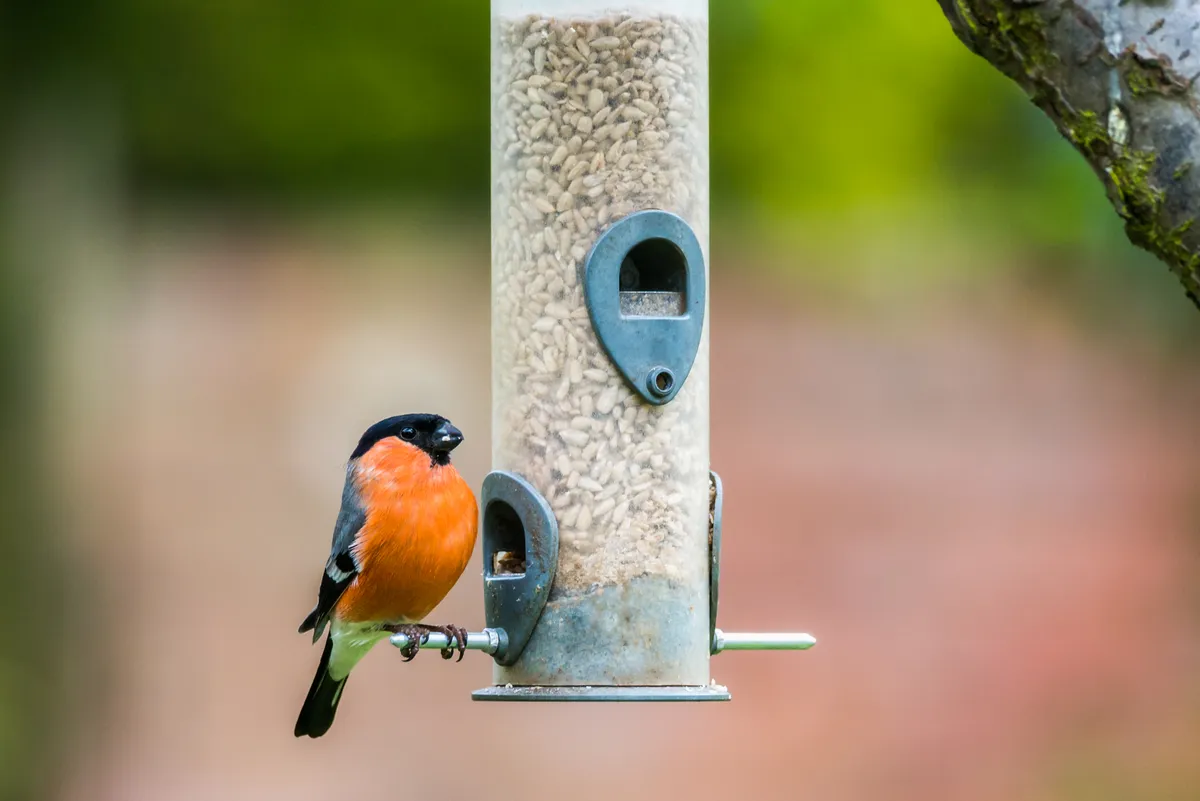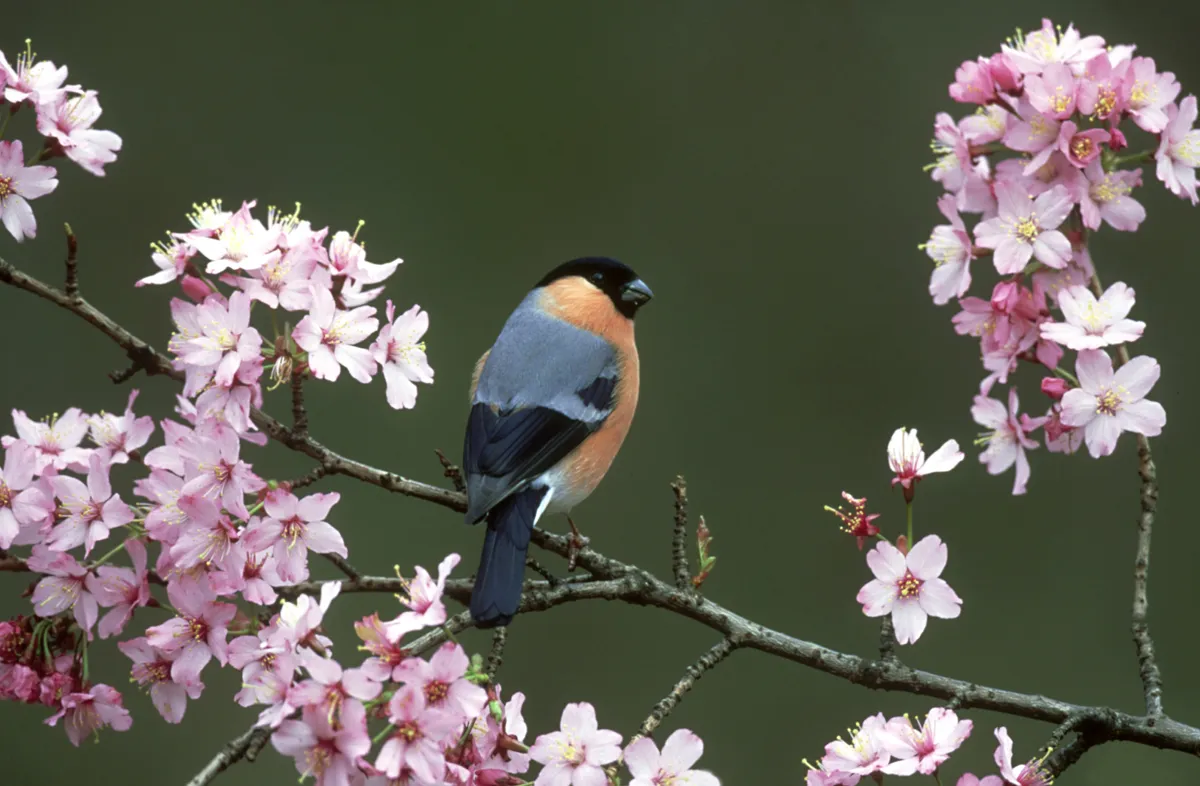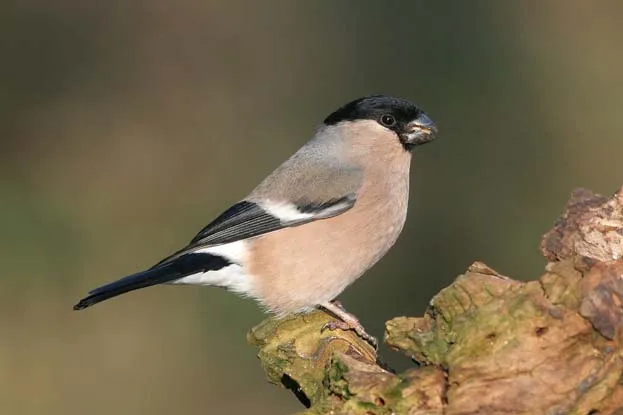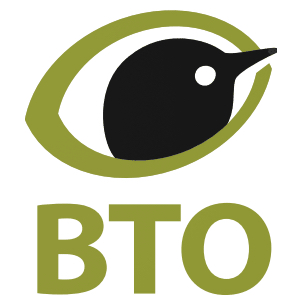Bullfinches are relatively recent users of our garden feeders, having been attracted to feeders by sunflower and other seeds. Seeds make up most of their diet and they favour plants like ash, elm and common nettle, but they do take insects when feeding their young.
They are only seen in about 10 per cent of BTO Garden BirdWatch gardens because they are extremely shy birds. They favour deciduous woodland, but have been increasing in gardens since the late 1990s.

How to attract bullfinches to your garden
If you don’t have them visiting your garden now, don’t despair. Although they generally remain in the same area throughout their lives, they may move away from their breeding sites during harsh winter months in order to find food.
Your odds are increased if you have a rural or suburban garden, especially one connected to a small area of scrub or woodland by thick hedgerows as they have a preference for thick cover.
How to spot a bullfinch
You are much more likely to see a bullfinch than to hear one. They have a very soft and very subtle call which is a low, short whistle ‘peu’.
The male breeding song is very quiet as well, consisting of a descending series of notes, repeated at intervals. In addition, they are a skilful mimic and were popular cage birds at one point, with people determined to teach them different tunes that were played to them.
The bullfinch is a hard bird to keep track of and a hard bird to monitor in scientific surveys. However, they do stand out if you’re lucky enough to see one. The species is a medium-sized finch that has quite a round body, with a large robust bill.
Males and females have a black cap that extends forward around the bill, a grey back, black wings with a grey-white wing bar, a black tail and a white rump. However, while the female and juveniles are pinkish-grey, the male stands out with rose-red underparts. Now is the best time to see them in gardens, so keep a lookout.
What do bullfinches eat?
In late winter/early spring, when the supply of seeds runs low, bullfinches turn to the buds of fruiting trees. They prefer flower buds over leaf buds as these are more nutritious, and can eat up to 30 buds a minute!

Due to their abundance during the 1950s to mid-1970s, their liking for flower buds made them considered a pest of commercial fruit trees. This led to a licensed control of the species, but did not seem to have a significant impact on numbers.
Sadly, they have since undergone a population decline which is thought to be due to changing agricultural practices and the loss of arable weeds.
How do bullfinches breed?
Breeding bullfinch pairs appear to remain together over several breeding seasons. They are not overly territorial during the breeding season, potentially due to the low density of occurrence, so it is not unheard of to see two males sharing a bird feeder.
They rarely breed in gardens as they prefer to nest in thick cover. However, you may still see them feeding as adults can travel a long distance from the nest due to the patchy distribution of food.
This means that they have developed special food sacs which are positioned in the floor of the mouth, allowing the parents to bring back food to their chicks. They are the only species of finch to have such sacs.

The British Trust of Ornithology (BTO) works in partnership with over 40,000 volunteer birdwatchers to chart the fortunes of UK birds.
